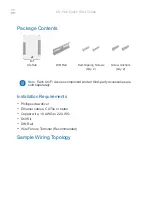
Test Report
TIDA-00830
– November 2015
1
TIDA-00830
24V Stepper Motor Design with AutoTune™ TI Reference Design
Design Overview
TIDA-00
830 is an application overview of TI’s
automatic stepper motor tuning feature known as
AutoTune™. This design showcases how quickly
AutoTune™ can adapt to changes in system inputs or
motor characteristics without the user having to apply
any type of parameter tuning. The hardware for this
design is sourced from the DRV8880 Evaluation
Module so the user has the ability to work with the
entire feature set of this device.
Design Resources
Design Folder
Product Folder
Product Folder
Product Folder
STEP/DIR
Step size
Decay mode
UART
USB
Stepper
Motor
DRV8880
MSP430
FT232RL
3.3-V LDO
V
M
Design Features
6.5- to 45-V operation with up to 2.0-A full-
scale (max drive current)
Configurable PWM Off-Time of 10-, 20-, or
30-µs
3.3-V, 10-mA LDO Regulator supply
AutoTune stepper motor tuning
Simple GUI for driver input control and motor
tuning
Onboard USB communication for easy
connectivity with external controller
100 mil header gives test probe access to all
driver input controls
Featured Applications
Automatic Teller and Money Handling
Machines
3D Printers
Factory Automation and Robotics
Video Security Cameras
1. Introduction
For stepper motors, a common design problem is tuning. Tuning involves selecting the best decay
mode to operate the stepper motor efficiently. A well-behaved current waveform makes for a well-
behaved stepper. These steppers will run smoothly (less vibration), quietly (less noise) and efficiently
(less power dissipation). Unfortunately, there are a lot of factors that can affect the waveform, such as
supply voltage, motor parameters, motor speed and load. Finding a fixed decay mode to match these
settings can sometimes be difficult, especially if these parameters shift during operation. Texas
Instruments AutoTune offered in the DRV8880 makes this process much simpler by determining the
proper decay mode and fast decay percentage based on individual motor characteristics and system
inputs.
























